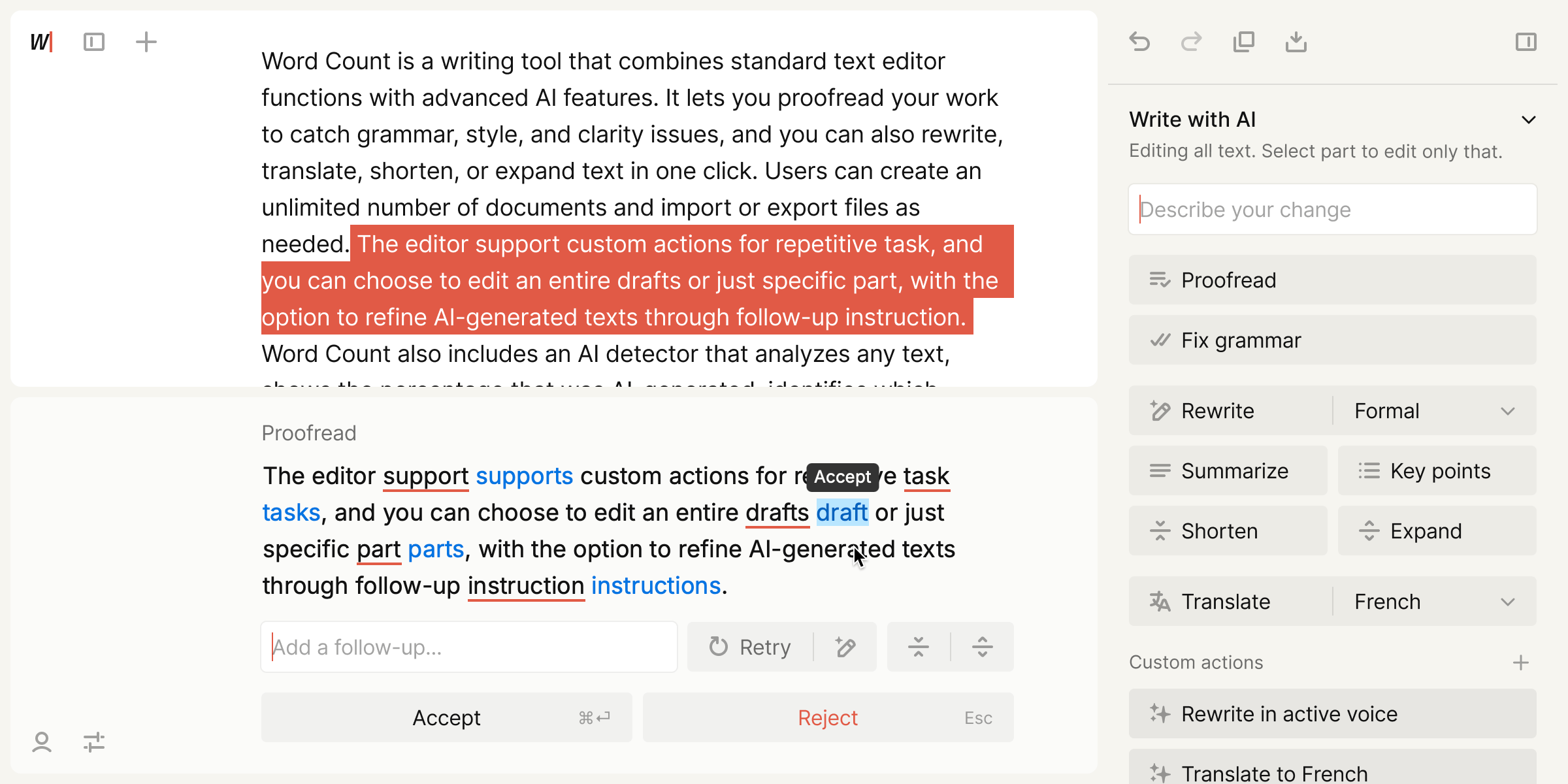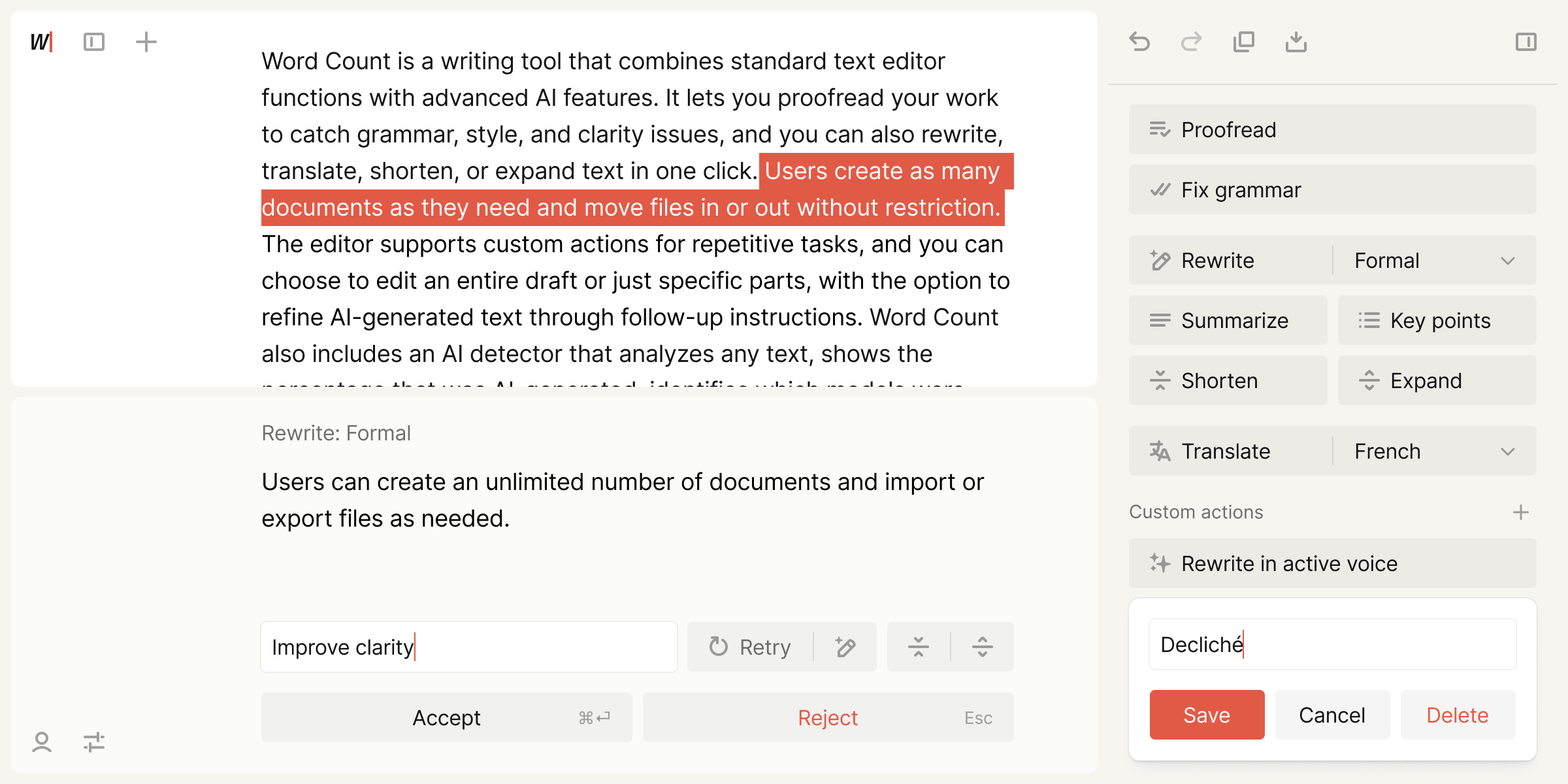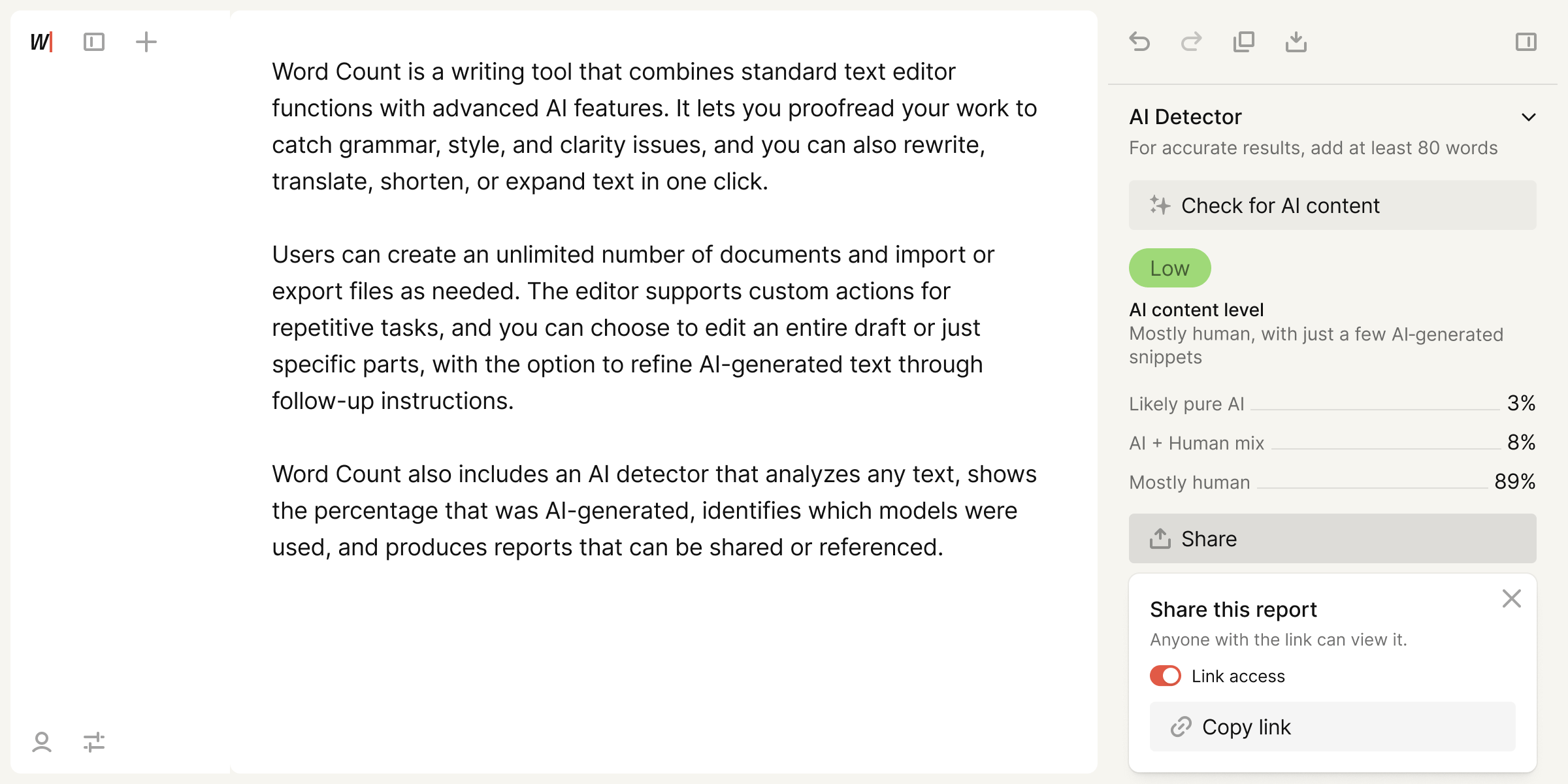Free AI Content Idea Generator
Get inspiration for your next piece of content by generating a huge variety of creative ideas.
Every writing tool in one place
Proofread your work to fix grammar, style, and clarity issues. Rewrite, translate, shorten, or expand text in one click. Create an unlimited number of documents, and easily import or export text files.

Smarter AI writing
Set up custom actions for tasks you repeat often. Edit full drafts or just selected parts. Use follow-up instructions to refine generated text as you review it.

AI detection you can trust
Not sure if a text is AI-written? Run it through the AI detector to see how much is AI-generated, which models were used, and share reliable reports.

Use cases of Ahrefs’ Content Idea Generator
- Blogging and content creation. Ahrefs’ Content Idea Generator can be a valuable tool for bloggers and content creators who need inspiration for their next blog post or article. By inputting relevant keywords or topics of interest, the tool can generate creative and unique content ideas. This use case helps bloggers overcome writer's block, explore new topics, and consistently produce engaging content for their audience.
- Social media content planning. Social media managers and marketers can leverage Ahrefs’ Content Idea Generator to plan their social media content calendar. By inputting the target audience, industry, or specific campaigns, the tool can generate content ideas that align with the social media platform's format and best practices. This use case ensures a steady stream of engaging and relevant content for social media channels, leading to increased audience engagement and brand visibility.
- Video and YouTube content creation. Content creators on platforms like YouTube can benefit from Ahrefs’ Content Idea Generator to generate fresh and interesting video content ideas. By inputting their niche, target audience, or specific video goals, the tool can generate unique and engaging video ideas. This use case helps content creators diversify their video content, maintain audience interest, and attract new viewers to their channel.
The technology behind Ahrefs’ Content Idea Generator
Ahrefs’ Content Idea Generator uses a language model that learns patterns, grammar, and vocabulary from large amounts of text data – then uses that knowledge to generate human-like text based on a given prompt or input. The generated text combines both the model's learned information and its understanding of the input.
Other writing tools you may find helpful
All AI tools →Blog Post Ideas Generator
Brainstorm variations of ready-to-use, SEO-friendly blog post ideas to drive more traffic to your blog.
Blog Title Generator
Generate engaging, SEO-friendly blog post titles to inspire a wide range of traffic-driving content.
Image Alt Text Generator
Effortlessly generate descriptive alt text for your images using our AI-powered tool. Improve accessibility and SEO without a hassle.
Meta Description Generator
Craft informative, SEO-friendly meta descriptions for your articles quickly and easily.
Title Generator
Generate optimized titles for better search engine visibility with this powerful free title maker.
Video Script Generator
Instantly create compelling video scripts with our free AI tool. Effortlessly generate engaging content for your videos in minutes.